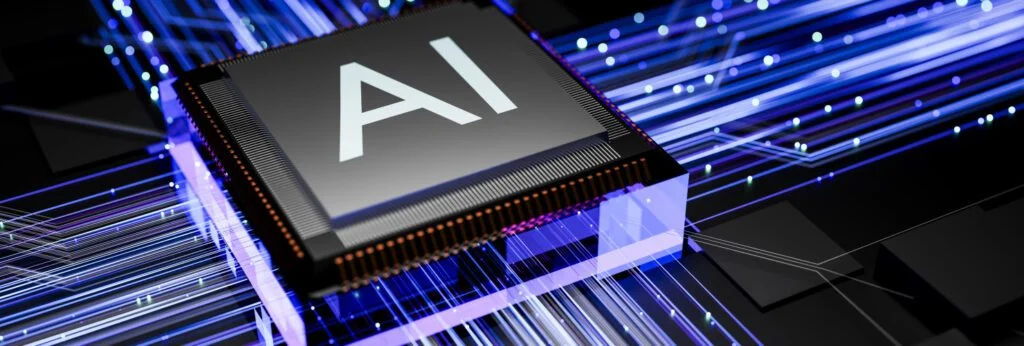Trillion Investment and highly strategic move, the United Arab Emirates (UAE) has announced a groundbreaking $1.4 trillion investment into the United States, with a primary focus on advancing artificial intelligence (AI) technology. This substantial commitment is designed to solidify the UAE’s place at the forefront of AI development while strengthening its position in the global technology race. Over the next decade, the UAE plans to direct this massive amount of capital towards enhancing its access to the U.S. AI industry, which is currently the global leader in technological innovation. The investment not only positions the UAE as a key player in the future of AI but also showcases its vision for economic diversification and technological growth.
Understanding the Strategic Intent Behind the Investment

The UAE’s decision to invest $1.4 trillion in the United States is part of a larger strategy to access cutting-edge artificial intelligence resources, enhance infrastructure, and boost technological capabilities. The move is particularly significant in the context of the ongoing global race for AI dominance. The UAE sees this as a vital step in its mission to reduce its dependency on traditional industries like oil and gas, and it is focused on ensuring its future economic prosperity through technological advancement.
One of the key drivers behind this large-scale investment is the UAE’s desire to secure preferential access to critical AI chip technologies. The U.S. has, in recent years, placed restrictions on the export of advanced semiconductor chips to certain countries, including the UAE, citing concerns over national security and potential links to rival countries like China. The UAE’s decision to commit such a large investment to the U.S. economy is likely an attempt to secure a better position in this high-stakes diplomatic and technological negotiation. By making such a large financial pledge, the UAE aims to encourage the U.S. government to ease restrictions and allow for more fluid access to the AI chips that are essential for advancing its technological ambitions.
Areas of Investment and Strategic Goals
The UAE’s massive investment will be channeled into several key areas that are critical for the development of a robust AI ecosystem:
- AI Infrastructure and Semiconductor Technology: At the heart of the UAE’s investment strategy is the aim to significantly enhance its access to AI research, infrastructure, and semiconductor technologies. These components are essential for the development of powerful AI systems capable of performing complex data processing and machine learning tasks. The UAE will partner with leading U.S. tech companies, including giants like Nvidia, to improve its AI computing power, which is vital for future advancements in fields like autonomous driving, healthcare, and data science.
- Energy Infrastructure and Manufacturing Projects: The investment is not limited to just AI technology. The UAE is also focused on strengthening its energy infrastructure and expanding its manufacturing capabilities. Part of the plan involves initiatives such as liquefied natural gas (LNG) projects in Texas, designed to meet growing global energy demand. Furthermore, the UAE’s Emirates Global Aluminium plans to construct a new smelter plant in the U.S., aiming to nearly double domestic aluminum production. This move will not only integrate the UAE deeper into the U.S. economy but also enhance its industrial and manufacturing capacity in the global market.
- Tech Industry Partnerships: The UAE is focusing on cultivating strong relationships with top-tier technology companies in the U.S. As part of its investment, the UAE will collaborate closely with industry leaders like Microsoft’s Satya Nadella and Nvidia’s Jensen Huang. These partnerships are aimed at accelerating AI development and integrating cutting-edge innovations into the UAE’s technological framework. Through these collaborations, the UAE seeks to foster an environment of innovation and exchange, bringing the best of American technology to the Middle East.
Diplomatic Engagements and Geopolitical Significance
The announcement of the UAE’s investment comes in the wake of high-level meetings between UAE officials and the U.S. leadership. Key figures such as UAE national security advisor Sheikh Tahnoon bin Zayed Al Nahyan have engaged in direct talks with President Donald Trump and U.S. business leaders to lay the groundwork for this massive commitment. These diplomatic engagements are central to the UAE’s approach, ensuring that the financial investment aligns with both political and economic interests.
The UAE’s investment also highlights the growing importance of tech diplomacy in global geopolitics. As countries around the world scramble to secure access to AI and semiconductor technology, nations like the UAE are leveraging strategic financial investments to create stronger alliances and negotiate favorable terms. In this context, the UAE’s $1.4 trillion bet on U.S. AI technology is not just about economic growth—it is a calculated effort to position itself as a technological powerhouse on the global stage.
Challenges and Potential Roadblocks
Despite the ambitious nature of this investment, there are several challenges that the UAE will need to navigate. One of the major hurdles is the ongoing uncertainty surrounding U.S. stock valuations. The high market prices in the U.S. and potential economic slowdowns, partially triggered by global trade tensions and the impacts of tariff wars, may complicate the UAE’s ability to see immediate returns on its investment. Additionally, the UAE faces the challenge of gaining greater access to U.S. technology, particularly AI chips, given the current restrictions in place.
Furthermore, the implementation of new export controls, such as the U.S. AI diffusion rule set to take effect in 2025, could create additional obstacles. These controls aim to limit the export of certain AI technologies to specific countries for national security reasons, and they may limit the UAE’s ability to freely access the most advanced AI resources without further negotiations.
Global Impact: What This Means for AI Competition
The UAE’s $1.4 trillion investment also carries significant implications for the global AI landscape. As countries like China, Russia, and the European Union push to expand their technological capabilities, the UAE’s strategy of partnering with the U.S. places it in direct competition with these global powers. The UAE is positioning itself to not only catch up with the AI giants but to potentially surpass them in specific areas of AI development, such as machine learning, data analytics, and autonomous systems.
Moreover, the UAE’s emphasis on technology-driven economic diversification sets a precedent for other nations seeking to reduce their dependency on traditional industries. As AI continues to shape global industries, the UAE’s bet on U.S. technology underscores the growing importance of technological investments in determining economic success and geopolitical influence.
Conclusion
The UAE’s bold $1.4 trillion investment in the U.S. AI sector is a game-changing move that will have lasting implications for both countries and the global technology market. By securing preferential access to advanced AI technologies, building strong industry partnerships, and diversifying its economy, the UAE is setting itself up for a leadership role in the future of AI. However, challenges remain, particularly in navigating export restrictions and ensuring the long-term success of such a massive investment. As the implementation of U.S. AI diffusion rules approaches, it will be critical to assess how this partnership evolves and whether the UAE’s investment strategy can effectively overcome these hurdles.
UAE Court Sentences Three to Death for Murder of Rabbi Zvi Kogan


